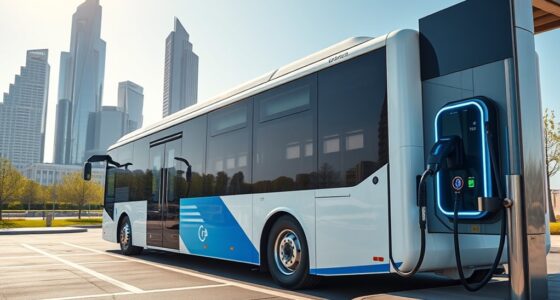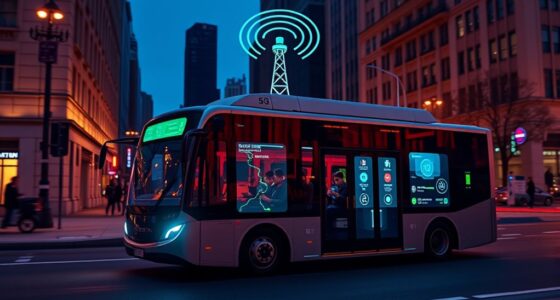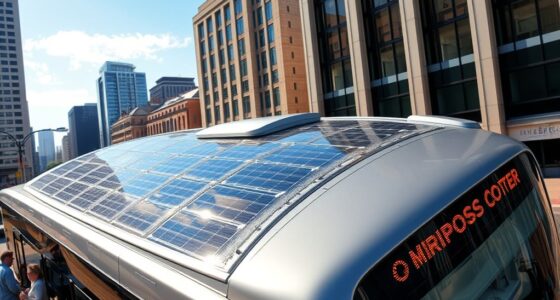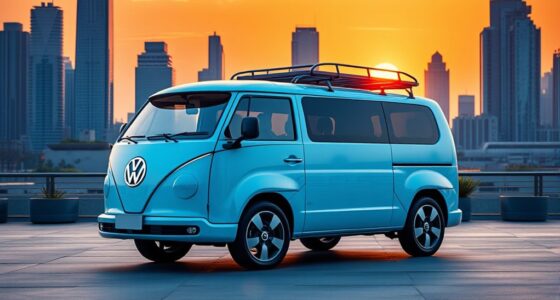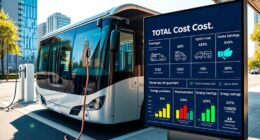As a VW Bus enthusiast, you can now use 3D printing to craft custom, durable parts that restore your vintage vehicle more efficiently. This innovative tech allows you to design and produce exact replacements for hard-to-find components, with modern materials that boost longevity and appearance. Plus, you can personalize your restoration with bespoke modifications without relying on costly molds or tooling. Keep exploring to discover how this technology can transform your classic restoration projects.
Key Takeaways
- VW Bus enthusiasts use 3D printing to recreate authentic, durable replacement parts for vintage models, overcoming scarcity of original components.
- Advanced design software and 3D scanning enable precise restoration of missing or damaged parts with custom details.
- Custom filament formulations allow for tailored materials that match or enhance original vintage part properties like flexibility and resilience.
- Hobbyists leverage accessible desktop 3D printers to produce parts at home, reducing costs and reliance on specialized workshops.
- This technology accelerates restoration timelines and enables personalized modifications, revitalizing classic VW Buses with modern craftsmanship.

3D printing has revolutionized how car parts are designed, produced, and repaired, offering a faster and more cost-effective alternative to traditional manufacturing methods. If you’re a VW Bus enthusiast looking to restore or customize your vintage ride, this technology opens up new possibilities. One of the key innovations is the ability to create custom filament tailored to your specific needs. Unlike off-the-shelf materials, custom filament can be formulated to match the original parts’ durability, flexibility, and appearance, guaranteeing your restoration stays true to the vintage aesthetic while benefiting from modern materials. This means you can produce replacement parts that are both authentic and resilient, even for components that are hard to find or no longer manufactured.
Using advanced design software, you can precisely recreate missing or damaged parts in a virtual environment. These programs allow you to scan existing components or draft new designs from scratch, giving you full control over the dimensions, textures, and details. Once you’ve perfected your digital model, you can send it directly to your 3D printer. This seamless integration between design software and printing hardware means you can prototype, iterate, and refine parts rapidly, reducing the waiting time and costs associated with traditional manufacturing. Whether you’re crafting a custom grille, dashboard components, or even intricate trim pieces, this process guarantees accuracy and consistency, which are vital for maintaining the integrity of your classic VW Bus.
Moreover, 3D printing with custom filament and sophisticated design tools empowers you to experiment freely. Want to add personalized touches or modify certain features? You can do so easily in the design software, then print the updated part without the need for expensive molds or tooling. This flexibility is particularly beneficial for restoring vintage vehicles, where original parts may no longer be available or are prohibitively expensive. With 3D printing, you’re no longer limited by the constraints of traditional manufacturing. You can create bespoke solutions on demand, tailored exactly to your project’s specifications. Additionally, understanding butter processing techniques and material properties can help you select or develop the best filament formulations for durability and performance.
In addition, the accessibility of this technology means you don’t need to be a professional engineer or have access to a large workshop. Many hobbyists now own desktop 3D printers capable of working with custom filament formulations. As you learn to navigate design software and experiment with different materials, you’ll gain a deeper understanding of your vehicle’s needs. This hands-on approach can be rewarding, transforming your restoration project into a creative journey. In the end, 3D printing technology offers VW Bus enthusiasts a powerful tool to breathe new life into their classics, combining nostalgic charm with cutting-edge innovation.
Frequently Asked Questions
What Are the Cost Differences Between 3D Printing and Traditional Restoration Methods?
You’ll find that 3D printing offers better cost efficiency compared to traditional restoration, mainly because material costs are lower and you can produce parts on-demand. While initial setup may be pricey, long-term savings come from reduced labor and fewer material wastes. Traditional methods often involve expensive molds and manual labor, making 3D printing a more affordable option for restoring classic vehicles, especially for complex or rare parts.
How Durable Are 3d-Printed Car Parts Compared to Original Components?
Did you know 3D-printed car parts can have up to 90% of the material strength of original components? When it comes to durability, these parts often excel in wear resistance, especially with advanced materials. While they may not match every original’s longevity, modern 3D printing techniques produce parts that are surprisingly durable and capable of handling daily use, making them a smart, cost-effective alternative for restoration projects.
Are There Any Legal Restrictions on Using 3D Printed Parts for Street Vehicles?
You should know that using 3D printed parts on street vehicles involves regulatory compliance, ensuring they meet safety and emissions standards. Additionally, you need to be aware of intellectual property laws; printing parts that infringe on patents or copyrights could lead to legal issues. Always verify local regulations and source designs responsibly to avoid fines or liability, especially when installing custom or modified components on your vehicle.
How Long Does It Typically Take to Produce a 3D Printed Car Part?
When you ask about the production timeline for a 3D printed car part, it’s a bit of a moving target. Typically, it can take anywhere from a few hours to several days, depending on complexity and design iteration. You need to take into account the time for designing, printing, and post-processing. Keep in mind, patience pays off, as rushing might compromise quality, and each step adds to the overall timeline.
Can 3D Printed Parts Be Customized Beyond Original Specifications?
You can absolutely customize 3D printed parts beyond original specifications. The beauty of 3D printing is its design flexibility, allowing you to create unique customization options tailored to your preferences. You can modify shapes, sizes, and features easily, giving you more control over the final product. This technology enables you to experiment with innovative designs and personalize parts to enhance performance or aesthetics, making your projects truly one-of-a-kind.
Conclusion
By embracing 3D printing, you can restore classic cars like the VW Bus more efficiently and accurately. Imagine printing a rare badge or a cracked interior part in just hours, saving time and money. For example, a vintage VW enthusiast recently recreated a missing dashboard piece, bringing their bus back to life. So, next time you’re faced with a hard-to-find component, consider 3D printing — it’s a game-changer for classic car restoration.


